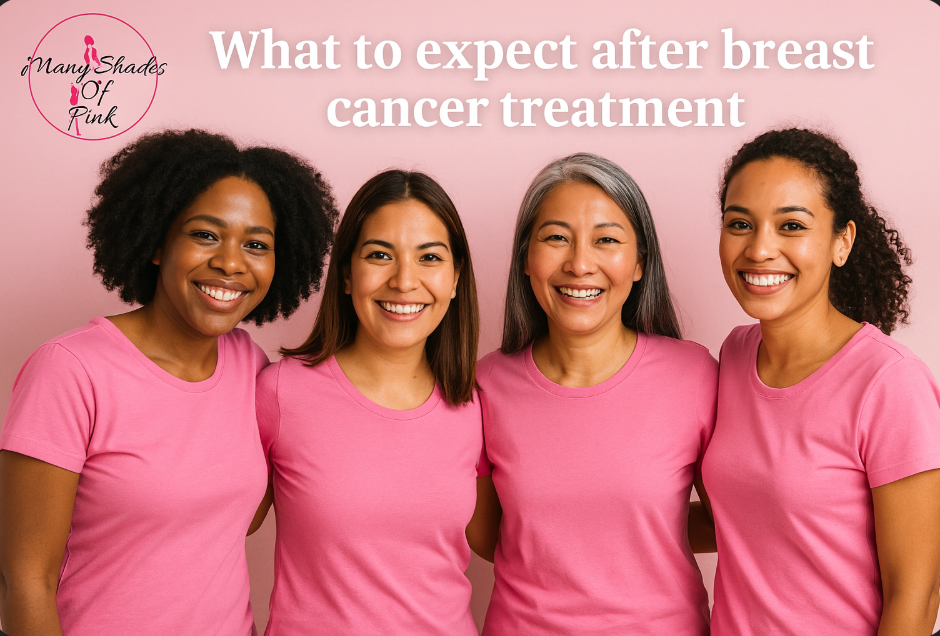Understanding Triple-Negative Breast Cancer (TNBC)
- MSOP

- Aug 22, 2024
- 3 min read
Updated: Oct 13

Early Detection Saves Lives
Early detection of breast cancer can lead to a 99% five-year relative survival rate for localized cases and an 86% survival rate when the cancer has spread to lymph nodes or other structures. Early detection through services such as breast screenings and mammograms plays a vital role in identifying cancer earlier. This can lead to more treatment options and can significantly enhance the effectiveness of treatment options. Many Shades of Pink empowers patients to seek guidance from their healthcare providers and community resources.
What is triple Negative Breast Cancer (TNBC)?
Triple-negative breast cancer is characterized by the absence of estrogen receptors (ER), progesterone receptors (PR), and human epidermal growth factor receptor 2 (HER2). Due to the lack of these receptors, TNBC cells do not produce or overproduce the HER2 protein. TNBC behaves more aggressively and presents rapid growth compared to other types of breast cancer. Unlike ER-positive and HER2-positive breast cancers, treatment options for TNBC are more limited. TNBC accounts for approximately 15 percent of breast cancers diagnosed worldwide and predominantly affects younger women below the age of 40 years of age. It disproportionately affects women of Black American descent and those with a BRCA1 mutation.
Risk factors of TNBC
Race/ethnicity
Black American women are at a higher risk of developing TNBC compared to White women.
Premenopausal status
Premenopausal women have an increased likelihood of being diagnosed with TNBC.
Positive BRCA mutation status
Up to 20 percent of patients with TNBC carry a BRCA mutation. It is recommended that patients aged 60 and younger with TNBC undergo BRCA germline testing.
Other
Research suggests that a relationship between obesity and the young age of first pregnancy may also be associated with an elevated risk of developing TNBC.
Signs and symptoms of TNBC
The signs and symptoms of TNBC are similar to those of other types of breast cancer. Key indicators may include:
A new lump or mass, especially one that is painless, hard, and has irregular borders
Swelling of all or part of the breast
Skin dimpling (resembling the skin of an orange peel)
Breast or nipple pain
Nipple retraction (inward turning)
Changes in the nipple or breast skin, such as thickening, redness, dryness, or flaking
Nipple discharge
Swollen lymph nodes under the arm or near the collarbone
Diagnosing TNBC
Due to its rapid growth, TNBC is often diagnosed through clinical evaluation rather than mammography alone. Imaging techniques, such as mammograms and biopsies, are used to identify cancer cells. These cells are then analyzed for the presence of specific proteins. A diagnosis of TNBC is confirmed when the cancer cells lack estrogen and progesterone receptors and produce little to no HER2 protein.
Treatment for TNBC
Since TNBC lacks estrogen and progesterone receptors and does not express the HER2 protein, hormone therapy and HER2-targeted drugs are ineffective. For cases where the cancer has not spread to distant areas, surgery is a viable treatment option. In some instances, chemotherapy may be administered before surgery to reduce the size of a large tumor. Following surgery, chemotherapy is often recommended to decrease the likelihood of recurrence. Radiation therapy may also be considered, depending on the tumor's characteristics and the type of surgery performed.
For additional information on treatment options, please visit Triple-Negative Breast Cancer Treatment.
Community Support and Resources: Many Shades of Pink offers free clinical breast exams, breast cancer & health education, and screening mammogram services through the UCSD Mammogram mobile. Join us at the Community Health and Resource Fair on the first Wednesday of every month. For more information about the resource fair, click here.
For additional resources, visit the Many Shades of Pink website We host a monthly virtual support group dedicated to individuals diagnosed with breast cancer. For additional information and to participate, please Register here.
Find us on social media




Comments